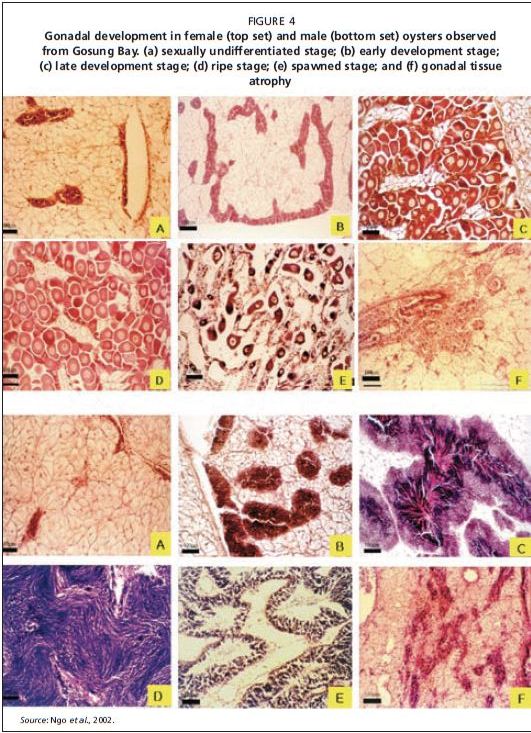CURRENT STATUS OF OYSTER AQUACULTURE
During the 1960s and 1980s, oyster production in the Republic of Korea increased dramatically due to the introduction of suspended culture techniques, which enabled the oyster farmers to extend their farming area from intertidal areas in the bays to deeper waters in the middle of the bay. In the early 1960s, Korean oyster production remained below 20 000 tonnes, however, production increased exponentially from 1965 to 1987; in 1985 production reached its peak at 288 078 tonnes (Figure 8).
During the 1990s and early 2000, the annual oyster production remained stable, between 170 000
Figure 4
Gonadal development in female (top set) and male (bottom set) oysters observed from Gosung Bay. (a) sexually undifferentiated stage; (b) early development stage; (c) late development stage; (d) ripe stage; (e) spawned stage; and (f) gonadal tissue atrophy

Source: Ngo et al., 2002.
to 250 000 tonnes. Figure 9 plots the value (in US$) of the Korean oyster production from 1985 to 2005. The value decreased dramatically in 1998 due to the drop of the foreign exchange rate brought about by the economic crisis in the Republic of Korea.
In 2005, over 251 706 tonnes of shell-on oysters were produced (or 37 756 tonnes of oyster meat), valued at US$128 269 million. In this same year, an additional 27 320 tonnes of oysters were harvested from natural banks, accounting for approximately 10 percent of the total national production.